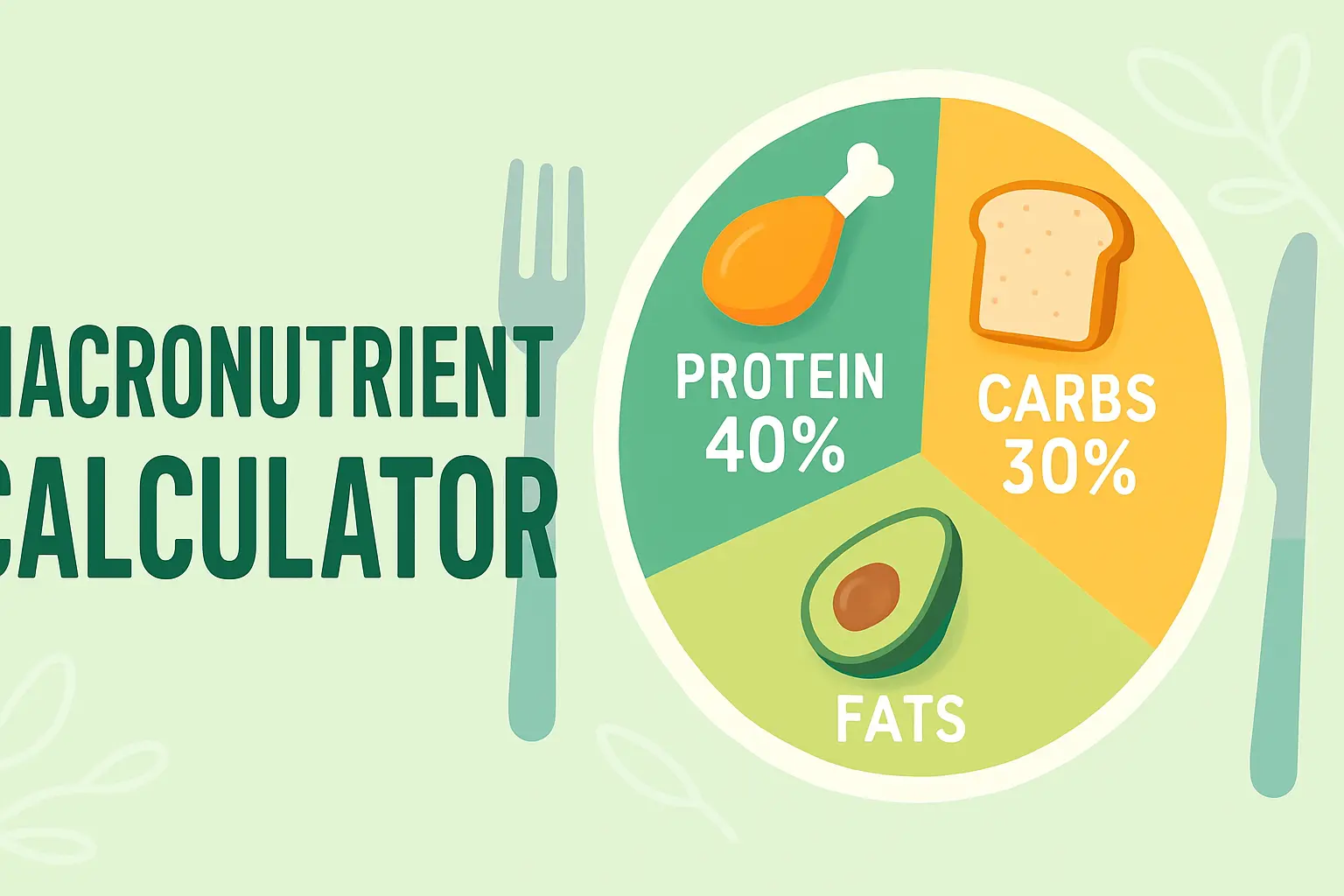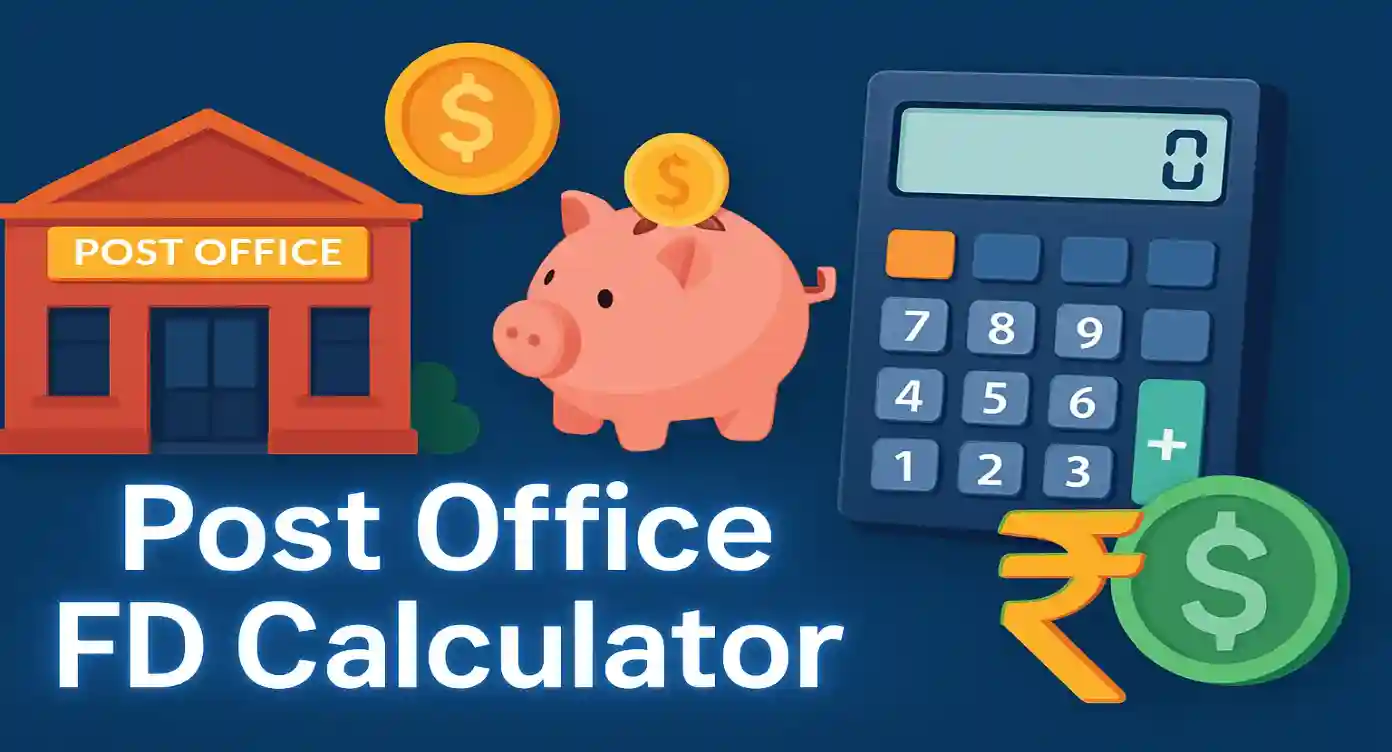Coast FIRE Calculator
Calculate when you can coast to financial independence and visualize your path to early retirement
Table of Contents
Coast FIRE Calculator
Enter Your Financial Information
Your Coast FIRE Analysis
Understanding Coast FIRE: The Path to Financial Freedom
Coast FIRE represents a revolutionary approach to financial independence that bridges the gap between traditional retirement planning and the aggressive savings strategies of the FIRE movement. Unlike conventional FIRE (Financial Independence, Retire Early), which requires you to accumulate enough wealth to cover all your expenses immediately, Coast FIRE allows you to reach a point where you can "coast" to traditional retirement age without making additional contributions to your retirement accounts.
The concept of Coast FIRE is built on the powerful principle of compound interest, often called the eighth wonder of the world. When you reach your Coast FIRE number, your existing investments will grow sufficiently over time to fund your retirement at a traditional age, typically between 60-67 years old. This milestone provides tremendous psychological relief and financial flexibility, knowing that your future retirement is already secured through the magic of compound growth.
Key Coast FIRE Principles:
- • Front-load your retirement savings early in your career
- • Leverage compound interest over extended time periods
- • Maintain flexibility in career and lifestyle choices
- • Reduce financial stress while maintaining growth potential
Coast FIRE differs significantly from other FIRE variants like Lean FIRE, Fat FIRE, or Barista FIRE. While these approaches focus on accumulating enough assets to withdraw a percentage annually for living expenses, Coast FIRE emphasizes reaching a specific threshold early in life that ensures retirement security without ongoing contributions. This approach is particularly appealing to individuals in their 20s and 30s who want financial security without the extreme frugality often associated with traditional FIRE strategies.
The mathematical foundation of Coast FIRE relies on determining your target retirement spending, applying the safe withdrawal rate (typically 4%), and then calculating the present value of that future need based on your expected investment returns and time horizon. For example, if you need $1 million at age 65 and you're currently 30 years old with a 7% annual return expectation, your Coast FIRE number would be approximately $131,367 in today's dollars.
Benefits of Coast FIRE Strategy
The Coast FIRE approach offers numerous advantages over traditional retirement planning and even other FIRE strategies. One of the most significant benefits is the psychological peace of mind that comes from knowing your retirement is already secured. This mental freedom allows individuals to make career decisions based on passion, purpose, and personal fulfillment rather than purely financial considerations.
Career flexibility becomes a reality once you reach Coast FIRE. You might choose to pursue a lower-paying but more fulfilling career, start your own business, work part-time, take extended sabbaticals, or even switch industries entirely. This flexibility is particularly valuable in today's rapidly changing job market, where traditional career paths are becoming less predictable.
From a financial perspective, Coast FIRE provides a safety net that reduces the risk of lifestyle inflation and overspending. Knowing that your retirement is already funded can help you maintain disciplined spending habits while still enjoying your current income. This balance between security and enjoyment is often missing from more extreme FIRE approaches.
Financial Benefits
- • Guaranteed retirement security
- • Reduced financial stress
- • Flexibility in spending decisions
- • Protection against market volatility
Lifestyle Benefits
- • Career freedom and flexibility
- • Pursuit of passion projects
- • Reduced work-related stress
- • Better work-life balance
Strategic Advantages
- • Earlier achievement than full FIRE
- • Lower savings rate requirements
- • Compound interest optimization
- • Risk mitigation strategy
Coast FIRE Calculation Methods and Formulas
Understanding the mathematical foundation of Coast FIRE calculations is essential for accurate financial planning. The core formula involves determining your FIRE number and then calculating the present value needed today to reach that target through compound growth over your remaining working years.
Primary Coast FIRE Formula:
Where real_return_rate = investment_return - inflation_rate
The FIRE number itself is calculated using the safe withdrawal rate principle, typically based on the famous 4% rule derived from the Trinity Study. This rule suggests that you can safely withdraw 4% of your portfolio annually in retirement without depleting your principal over a 30-year period.
Step-by-Step Calculation:
- 1. Determine annual retirement expenses
- 2. Calculate FIRE number: Expenses ÷ 0.04
- 3. Determine years to retirement
- 4. Calculate real return rate
- 5. Apply present value formula
Example Calculation:
Annual expenses: $50,000
FIRE number: $1,250,000
Years to retirement: 30
Real return: 4% (7% - 3%)
Coast FIRE: $385,543
It's crucial to understand that Coast FIRE calculations must account for inflation to maintain purchasing power over time. The real return rate (nominal return minus inflation) is used in calculations to ensure that your future buying power matches your current planning assumptions. Historical data suggests using conservative estimates: 7-8% for stock market returns and 2-3% for inflation.
Advanced Coast FIRE calculations may also incorporate variable factors such as changing contribution patterns, salary increases, lifestyle inflation, healthcare costs, and Social Security benefits. Some planners prefer using Monte Carlo simulations to model different scenarios and success probabilities, particularly when dealing with longer time horizons where uncertainty increases significantly.
Investment Strategies for Coast FIRE Success
Achieving Coast FIRE requires a well-structured investment strategy that maximizes compound growth while managing risk appropriately for your time horizon. The key is to build a diversified portfolio that can weather market volatility while generating the long-term returns necessary to reach your Coast FIRE target.
Growth-Focused Approach
Emphasize growth stocks, index funds, and emerging markets for maximum long-term appreciation potential during accumulation phase.
Balanced Diversification
Maintain diversification across asset classes, geographies, and sectors to reduce overall portfolio risk and volatility.
Risk Management
Implement appropriate risk controls and rebalancing strategies to protect accumulated wealth as you approach Coast FIRE.
The stock market historically provides the best long-term returns for Coast FIRE accumulation, with the S&P 500 averaging approximately 10% annual returns over the past century. However, young investors pursuing Coast FIRE should consider a globally diversified approach including domestic large-cap stocks, international developed markets, emerging markets, and small-cap value stocks for enhanced diversification and potential return enhancement.
Index fund investing is particularly well-suited for Coast FIRE strategies due to low costs, broad diversification, and consistent market returns. Popular index fund combinations include total stock market funds, international index funds, and small amounts of bonds or REITs. The key is maintaining low expense ratios (ideally under 0.1%) to maximize compound growth over decades of accumulation.
Asset Allocation Guidelines by Age:
Ages 30-40: 80-90% Stocks, 10-20% Bonds
Ages 50+: 60-70% Stocks, 30-40% Bonds
Tax-advantaged accounts like 401(k)s, IRAs, and Roth IRAs should be maximized early in your Coast FIRE journey. These accounts provide either immediate tax deductions or tax-free growth, significantly enhancing your compound returns. The order of priority typically includes: employer 401(k) match, Roth IRA or traditional IRA (depending on income level), remaining 401(k) space, and finally taxable investment accounts.
Dollar-cost averaging through automatic investments helps smooth out market volatility and removes emotional decision-making from the investment process. Setting up automatic transfers to investment accounts ensures consistent progress toward your Coast FIRE target regardless of market conditions or personal circumstances.
Age and Timeline Considerations for Coast FIRE
The age at which you start pursuing Coast FIRE dramatically impacts both the difficulty of achievement and the required savings rate. Starting earlier provides the tremendous advantage of extended compound growth periods, while starting later requires more aggressive savings but offers the benefit of higher earning potential and clearer financial priorities.
| Starting Age | Years to 65 | Coast FIRE for $50k/year | Monthly Savings Needed |
|---|---|---|---|
| 22 | 43 | $79,432 | $483 |
| 25 | 40 | $105,625 | $651 |
| 30 | 35 | $158,887 | $1,089 |
| 35 | 30 | $238,969 | $1,825 |
| 40 | 25 | $359,271 | $3,127 |
Young professionals in their early twenties have the greatest Coast FIRE advantage due to the extended time horizon for compound growth. A 22-year-old who saves $500 monthly could potentially reach Coast FIRE by age 30-35, providing decades of career flexibility and reduced financial pressure. This early achievement often comes at a time when lifestyle flexibility is highest and career experimentation most beneficial.
Individuals starting Coast FIRE in their thirties face a different challenge-reward profile. While the required savings amounts are higher, this demographic typically enjoys increased earning potential, clearer career trajectories, and better understanding of long-term lifestyle preferences. The key is balancing aggressive savings with other life priorities like home ownership, family planning, and career development.
Early Starters (20s) Advantages:
- • Maximum compound growth benefit
- • Lower absolute dollar requirements
- • High lifestyle flexibility
- • Decades of career freedom potential
- • Lower risk tolerance needed
Later Starters (30s+) Advantages:
- • Higher earning potential
- • Clearer financial priorities
- • Better risk assessment skills
- • More disciplined saving habits
- • Established career trajectory
Timeline flexibility is one of Coast FIRE's key advantages over traditional FIRE approaches. Rather than targeting a specific early retirement age, Coast FIRE provides security knowing that traditional retirement is funded regardless of career changes or life circumstances. This flexibility allows for more balanced life decisions and reduces the pressure to maintain extreme savings rates indefinitely.
Market timing considerations also play a role in Coast FIRE timelines. Starting your Coast FIRE journey during market downturns can actually be advantageous, as you purchase more shares at lower prices early in your accumulation phase. Conversely, reaching Coast FIRE during market peaks might require monitoring and potential rebalancing to protect accumulated gains.
Coast FIRE vs Traditional FIRE: A Comprehensive Comparison
Understanding the differences between Coast FIRE and traditional FIRE approaches is crucial for choosing the strategy that best aligns with your life goals, risk tolerance, and financial circumstances. Each approach offers distinct advantages and trade-offs that appeal to different personality types and life situations.
| Aspect | Coast FIRE | Traditional FIRE |
|---|---|---|
| Savings Rate | 10-25% initially, then 0% | 50-70% continuously |
| Retirement Age | Traditional (60-67) | Early (30-50) |
| Career Flexibility | High after Coast FIRE | Complete after FIRE |
| Lifestyle During Accumulation | Balanced | Highly frugal |
| Risk Level | Moderate | High (sequence of returns) |
| Time to Achieve | 5-15 years | 10-20 years |
Traditional FIRE requires accumulating 25-30 times your annual expenses and maintaining extremely high savings rates (often 50-70% of income) to achieve financial independence within 10-20 years. This approach demands significant lifestyle sacrifices during the accumulation phase but offers complete work-optional status upon achievement. The psychological and practical demands of maintaining such high savings rates can be challenging for many individuals.
Coast FIRE, by contrast, focuses on front-loading retirement savings to a specific threshold, after which compound growth handles the rest. This approach typically requires 10-25% savings rates initially but allows normal lifestyle spending once the Coast FIRE target is reached. The trade-off is working until traditional retirement age rather than achieving early complete financial independence.
Coast FIRE Best For:
- • People who enjoy their careers
- • Those wanting balanced lifestyles
- • Individuals with variable incomes
- • People planning career changes
- • Those uncomfortable with extreme frugality
Traditional FIRE Best For:
- • High-income earners
- • People unhappy with current work
- • Those wanting complete freedom early
- • Individuals comfortable with frugality
- • People with stable, high-paying careers
The psychological aspects of each approach differ significantly. Traditional FIRE can create intense pressure to maintain high savings rates and can lead to burnout or lifestyle dissatisfaction during the accumulation phase. Coast FIRE provides earlier psychological relief by securing retirement early while maintaining lifestyle balance, though it requires accepting a longer working timeline.
From a risk management perspective, Coast FIRE offers certain advantages. By securing retirement funding early, you're protected against late-career job loss, health issues, or market downturns close to retirement. Traditional FIRE faces sequence of returns risk – the danger that poor market performance early in retirement could jeopardize long-term financial security.
Many individuals find success with hybrid approaches, such as pursuing Coast FIRE first to secure retirement, then continuing aggressive savings toward traditional FIRE if desired. This strategy provides security milestones along the way and allows for course corrections based on changing life circumstances or priorities.
Income Requirements and Optimization for Coast FIRE
Income optimization plays a crucial role in Coast FIRE success, as higher earnings accelerate the timeline to reaching your Coast FIRE threshold. Unlike traditional FIRE, which requires maintaining high income throughout the accumulation phase, Coast FIRE allows for income flexibility once the target is reached, making it particularly attractive for individuals considering career changes or entrepreneurial pursuits.
The relationship between income and Coast FIRE achievement is not linear. Doubling your income doesn't necessarily halve your time to Coast FIRE, as lifestyle inflation and tax implications can reduce the actual savings benefit. The key is optimizing the gap between earnings and spending during the initial accumulation phase while positioning yourself for sustainable income throughout your working years.
Education & Skills
Invest in education, certifications, and skills that increase long-term earning potential and career stability.
Career Strategy
Focus on high-growth industries and roles with clear advancement paths during Coast FIRE accumulation.
Multiple Streams
Develop multiple income sources to accelerate Coast FIRE achievement and reduce single-income dependency.
Income requirements for Coast FIRE vary significantly based on your target retirement spending, time horizon, and expected investment returns. Generally, individuals need to save 15-25% of their income if starting in their twenties, or 25-40% if starting in their thirties. These percentages assume moderate incomes ($50,000-$150,000 annually) and traditional retirement spending needs.
Income Optimization Strategies:
- • Negotiate salary increases annually
- • Pursue high-ROI education and training
- • Develop valuable specialized skills
- • Consider geographic arbitrage opportunities
- • Build professional networks actively
- • Explore side hustles and consulting
- • Optimize tax strategies and benefits
- • Focus on performance-based compensation
Side income and entrepreneurial activities can significantly accelerate Coast FIRE achievement. Popular approaches include consulting, freelancing, online businesses, real estate investing, and creating digital products. The key is choosing income streams that align with your skills and don't compromise your primary career during the crucial accumulation phase.
After reaching Coast FIRE, income requirements shift dramatically. You only need to earn enough to cover current living expenses, providing tremendous flexibility to pursue passion projects, lower-stress jobs, or entrepreneurial ventures without financial pressure. This flexibility is one of Coast FIRE's most attractive features for individuals seeking work-life balance.
Geographic arbitrage can play a powerful role in both Coast FIRE accumulation and post-Coast FIRE lifestyle optimization. Earning high salaries in expensive cities while young, then relocating to lower-cost areas after reaching Coast FIRE, can dramatically improve lifestyle quality while reducing ongoing income requirements.
Tax optimization becomes increasingly important as income rises during Coast FIRE pursuit. Maximizing pre-tax retirement contributions, utilizing HSAs, managing taxable account harvesting, and planning Roth conversion strategies can significantly impact the effective savings rate and time to Coast FIRE achievement.
Understanding Inflation's Impact on Coast FIRE Planning
Inflation represents one of the most critical yet often misunderstood factors in Coast FIRE planning. Over the extended time horizons typical of Coast FIRE strategies, inflation can dramatically impact your purchasing power and retirement security. Understanding and properly accounting for inflation is essential for accurate Coast FIRE calculations and long-term financial success.
Historical inflation data shows that the U.S. has experienced an average annual inflation rate of approximately 2-3% over the past century, with significant variations during different economic periods. However, certain categories of expenses that retirees face disproportionately, such as healthcare costs, have historically inflated at rates significantly higher than general inflation, sometimes exceeding 5-7% annually.
The Inflation Challenge:
A Coast FIRE plan that ignores inflation could leave you with significantly less purchasing power than expected. For example:
This means you'd need nearly $2.5 million instead of $1.25 million to maintain the same lifestyle!
Proper Coast FIRE calculations must use real (inflation-adjusted) returns rather than nominal returns. If your investments earn 7% annually and inflation averages 3%, your real return is approximately 4%. This real return should be used in Coast FIRE calculations to ensure your future purchasing power matches your current planning assumptions.
Inflation Protection Strategies:
- • Invest in inflation-hedged assets (TIPS, REITs)
- • Maintain significant stock allocation
- • Consider commodities exposure
- • Use real return assumptions in calculations
- • Plan for higher healthcare inflation
Asset Class Inflation Performance:
Stock investments have historically provided excellent long-term inflation protection, as companies can typically raise prices and adjust operations to maintain real profitability. This is one reason why Coast FIRE strategies emphasize stock-heavy portfolios during the accumulation phase. However, stocks don't provide perfect inflation protection in all time periods, particularly during stagflation scenarios.
Treasury Inflation-Protected Securities (TIPS) offer direct inflation protection by adjusting principal values based on changes in the Consumer Price Index. While TIPS provide certainty against inflation, they typically offer lower expected returns than stocks over long periods. A small allocation to TIPS (5-15%) can provide additional inflation protection without significantly reducing long-term growth potential.
Geographic diversification can also provide some inflation protection, as different countries may experience varying inflation rates and currency adjustments over time. International stock exposure through index funds provides natural hedging against domestic inflation while potentially enhancing overall returns through global diversification.
Regular monitoring and potential adjustment of Coast FIRE plans is essential as actual inflation data emerges over time. If inflation runs significantly higher or lower than initial assumptions, your Coast FIRE target and timeline may need adjustment. This flexibility to adapt is another advantage of Coast FIRE over more rigid retirement planning approaches.
Risks and Considerations in Coast FIRE Planning
While Coast FIRE offers significant advantages over traditional retirement planning, it's important to understand and plan for potential risks and challenges that could impact your strategy. Proper risk assessment and mitigation planning are essential components of a robust Coast FIRE approach that can withstand various economic and personal circumstances.
Market and Economic Risks
- • Sequence of returns risk
- • Extended bear markets
- • Higher-than-expected inflation
- • Interest rate environment changes
- • Currency devaluation risks
Personal and Lifestyle Risks
- • Health issues and healthcare costs
- • Job loss or career setbacks
- • Lifestyle inflation over time
- • Family and dependency changes
- • Geographic relocation needs
Sequence of returns risk represents one of the most significant challenges for Coast FIRE planning. If poor market performance occurs early in your retirement years, your portfolio may not recover sufficiently to support your planned spending. Unlike traditional FIRE, which faces this risk immediately upon retirement, Coast FIRE faces it decades in the future, making it harder to predict and plan for.
Healthcare costs represent a particularly challenging risk factor for Coast FIRE planning. Medical expenses have historically inflated faster than general inflation and can vary dramatically based on individual health circumstances. Consider that healthcare costs in retirement may be 2-3 times higher than current assumptions, particularly if long-term care becomes necessary.
Risk Mitigation Strategies:
- • Build larger Coast FIRE buffer (10-20%)
- • Maintain emergency funds separate from investments
- • Consider disability and life insurance
- • Diversify across asset classes and geographies
- • Plan for higher healthcare costs
- • Maintain flexible spending expectations
- • Develop multiple income skills
- • Regular plan review and adjustment
The assumption of earning investment returns over long periods carries inherent uncertainty. While historical stock market returns suggest 7-10% annual growth, future returns may be lower due to high current valuations, changing economic conditions, or other unforeseen factors. Using conservative return assumptions (6-7% instead of 8-10%) can help protect against this uncertainty.
Career and income risks become particularly important during the Coast FIRE accumulation phase. Job loss, industry downturns, or skill obsolescence could derail your timeline to reaching Coast FIRE. Maintaining marketable skills, building professional networks, and having emergency funds become crucial risk management tools.
Lifestyle inflation represents a subtle but significant risk to Coast FIRE success. As incomes rise and life circumstances change, spending tends to increase correspondingly. What seems like a reasonable retirement spending target today may feel inadequate in 10-20 years. Regular review and adjustment of Coast FIRE targets helps ensure they remain realistic and achievable.
Political and regulatory risks should also be considered, particularly regarding tax-advantaged retirement accounts, Social Security benefits, and Medicare coverage. Changes to these programs could impact both the accumulation and distribution phases of your Coast FIRE plan. Diversifying across different account types (traditional, Roth, taxable) provides some protection against regulatory changes.
Despite these risks, Coast FIRE still offers significant advantages over traditional retirement planning by front-loading savings and leveraging compound growth. The key is understanding these risks and building appropriate safeguards and flexibility into your planning process.
Real-World Coast FIRE Examples and Case Studies
Understanding how Coast FIRE works in practice through real-world scenarios helps illustrate the strategy's versatility and potential outcomes. These detailed case studies demonstrate how different individuals can successfully implement Coast FIRE strategies based on their unique circumstances, goals, and constraints.
Case Study 1: Sarah, the Early Starter
Profile:
- • Age: 24, Software Engineer
- • Income: $85,000 annually
- • Current savings: $15,000
- • Target retirement spending: $50,000/year
- • Planned retirement age: 65
Coast FIRE Results:
- • Coast FIRE target: $95,000
- • Time to reach: 6.5 years (age 30.5)
- • Required monthly savings: $1,100
- • Savings rate needed: 15.5%
Sarah's early start provides tremendous advantages. By saving $1,100 monthly (achievable on her income), she reaches Coast FIRE by age 30, providing 35 years of career flexibility while her investments grow to support retirement.
Case Study 2: Marcus, the Mid-Career Professional
Profile:
- • Age: 35, Marketing Director
- • Income: $120,000 annually
- • Current savings: $75,000
- • Target retirement spending: $70,000/year
- • Planned retirement age: 67
Coast FIRE Results:
- • Coast FIRE target: $385,000
- • Time to reach: 8.5 years (age 43.5)
- • Required monthly savings: $2,800
- • Savings rate needed: 28%
Marcus needs a higher savings rate due to his later start and higher lifestyle expectations, but his increased income makes this achievable. Reaching Coast FIRE by 43 still provides significant career flexibility for over 20 years.
Case Study 3: Jennifer & David, the Couple Strategy
Profile:
- • Ages: 28 & 30, Teacher & Engineer
- • Combined income: $145,000
- • Current savings: $40,000
- • Target retirement spending: $80,000/year
- • Planned retirement age: 65
Coast FIRE Results:
- • Coast FIRE target: $275,000
- • Time to reach: 7 years (ages 35 & 37)
- • Required monthly savings: $2,400
- • Savings rate needed: 19.8%
This couple benefits from dual incomes and shared expenses. Reaching Coast FIRE in their mid-30s provides flexibility for potential career changes, starting a family, or pursuing entrepreneurial ventures without retirement security concerns.
Common Success Factors Across All Cases:
- • Early and consistent investing habits
- • Focus on index fund investing with low fees
- • Maximizing employer retirement benefits
- • Maintaining disciplined spending habits
- • Regular plan monitoring and adjustment
- • Building emergency funds separately
- • Optimizing tax-advantaged accounts
- • Maintaining long-term perspective
These examples demonstrate how Coast FIRE can be adapted to different income levels, ages, and life circumstances. The key variables that impact success include starting age, income level, target retirement lifestyle, and discipline in maintaining savings rates during the accumulation phase.
What's particularly notable across all cases is how Coast FIRE provides earlier psychological relief compared to traditional FIRE approaches, while still requiring reasonable rather than extreme lifestyle sacrifices during the accumulation phase. This balance makes Coast FIRE sustainable for a broader range of individuals and life situations.
Post-Coast FIRE life varies significantly among individuals. Some choose to continue aggressive savings toward full FIRE, others pursue passion careers or entrepreneurship, and many simply enjoy reduced financial stress while maintaining their current career trajectories. This flexibility is one of Coast FIRE's greatest strengths.
Essential Tools and Resources for Coast FIRE Success
Successfully implementing a Coast FIRE strategy requires access to the right tools, calculators, and resources for planning, tracking, and adjusting your approach over time. From investment platforms to budgeting software, having the proper toolkit can significantly enhance your chances of achieving Coast FIRE efficiently and accurately.
Calculators & Planning
- • Coast FIRE calculators
- • Compound interest calculators
- • Retirement planning tools
- • Tax optimization calculators
- • Asset allocation models
Investment Platforms
- • Low-cost brokerages
- • Index fund providers
- • Robo-advisors
- • 401(k) optimization tools
- • Rebalancing software
Tracking & Apps
- • Net worth tracking apps
- • Budget management tools
- • Investment monitoring
- • Goal progress trackers
- • Expense categorization
Investment platform selection plays a crucial role in Coast FIRE success due to the impact of fees over long time horizons. Low-cost brokerages offering commission-free trading and access to low-expense-ratio index funds can save thousands of dollars over decades of investing. Major platforms like Vanguard, Fidelity, and Charles Schwab offer excellent options for Coast FIRE investors.
Budgeting and expense tracking tools help maintain the discipline necessary during the Coast FIRE accumulation phase. Popular options include Mint, YNAB (You Need A Budget), Personal Capital, and Tiller. These tools provide insights into spending patterns, track progress toward savings goals, and help identify opportunities for expense reduction.
| Tool Category | Recommended Options | Key Benefits |
|---|---|---|
| Brokerages | Vanguard, Fidelity, Schwab | Low fees, broad fund selection |
| Budgeting | YNAB, Mint, Personal Capital | Expense tracking, goal monitoring |
| Calculators | FIRECalc, Portfolio Visualizer | Scenario modeling, backtesting |
| Education | Bogleheads, Reddit FIRE communities | Community support, shared experiences |
Educational resources and community support can provide valuable motivation and guidance throughout your Coast FIRE journey. The Bogleheads community offers excellent advice on low-cost index investing, while Reddit communities like r/coastFIRE and r/financialindependence provide peer support and real-world experiences from others pursuing similar goals.
Tax optimization tools become increasingly important as investment accounts grow. Software like TurboTax, Tax Act, or working with fee-only financial planners can help optimize tax-advantaged account contributions, manage tax-loss harvesting, and plan Roth conversion strategies that enhance long-term Coast FIRE outcomes.
Regular monitoring and adjustment tools help ensure your Coast FIRE plan stays on track despite changing circumstances. Quarterly reviews of investment performance, expense levels, and progress toward goals help identify when course corrections might be necessary. Many successful Coast FIRE achievers maintain simple spreadsheets or use apps that track their progress over time.
The key is selecting tools that match your technical comfort level and provide the specific functionality you need without overwhelming complexity. Starting with basic tools and gradually adding sophistication as your knowledge and needs grow often works better than trying to implement complex systems from the beginning.
Advanced Optimization Tips for Coast FIRE Acceleration
While the basic Coast FIRE strategy is straightforward, implementing advanced optimization techniques can significantly accelerate your timeline and improve your overall financial outcomes. These strategies focus on maximizing efficiency across all aspects of your financial life while maintaining the sustainable, balanced approach that makes Coast FIRE attractive.
Tax Optimization Strategies
- Maximize pre-tax 401(k) contributions to reduce current tax burden
- Utilize Roth IRA backdoor conversions for high earners
- Implement tax-loss harvesting in taxable accounts
- Maximize HSA contributions for triple tax advantage
Investment Optimization
- Choose lowest cost index funds (expense ratios under 0.1%)
- Implement factor tilting toward small-cap value stocks
- Optimize asset location across account types
- Rebalance systematically to maintain target allocations
Fee minimization represents one of the most powerful optimization techniques available to Coast FIRE investors. Over 30-40 year time horizons, the difference between 0.05% and 0.5% expense ratios can amount to tens of thousands of dollars in lost returns. Focusing on ultra-low-cost index funds from providers like Vanguard, Fidelity, and Schwab maximizes the compound growth essential to Coast FIRE success.
Asset location optimization involves placing different types of investments in the most tax-efficient account types. Tax-inefficient investments like REITs or bonds should be held in tax-advantaged accounts, while tax-efficient investments like total stock market index funds can be held in taxable accounts. This strategy can improve after-tax returns by 0.1-0.3% annually.
Advanced Coast FIRE Techniques:
- • Mega backdoor Roth conversions
- • Geographic arbitrage planning
- • Side income development
- • Employer benefit optimization
- • Sequence of returns protection
- • Factor-based investing
- • International diversification
- • Regular plan stress-testing
The mega backdoor Roth strategy allows high earners to contribute up to $66,000 annually to Roth accounts through after-tax 401(k) contributions and in-service distributions. This advanced technique can dramatically accelerate Coast FIRE timelines for individuals with access to compatible employer plans and sufficient income to maximize contributions.
Factor investing, or tilting toward historically higher-returning asset classes like small-cap value stocks, can potentially enhance long-term returns by 1-2% annually. While this approach involves additional complexity and risk, the long time horizons typical of Coast FIRE make it well-suited to factor-based strategies. However, this should only be implemented after mastering basic index investing principles.
Geographic arbitrage involves earning high salaries in expensive markets while planning to relocate to lower-cost areas after reaching Coast FIRE. This strategy can dramatically reduce your Coast FIRE target number while potentially improving lifestyle quality. Planning for this transition from the beginning allows for more aggressive initial Coast FIRE targets.
Regular stress-testing of your Coast FIRE plan helps ensure robustness against various scenarios. This involves modeling outcomes under different return assumptions, inflation rates, and spending levels. Monte Carlo simulation tools can help quantify the probability of success under various scenarios and identify areas where additional safety margins might be beneficial.
Automation plays a crucial role in Coast FIRE optimization by removing emotional decision-making and ensuring consistent progress. Setting up automatic transfers to investment accounts, automatic rebalancing, and systematic contribution increases helps maintain discipline and momentum throughout the accumulation phase.
Frequently Asked Questions About Coast FIRE
What exactly is Coast FIRE and how is it different from regular FIRE?
Coast FIRE is a financial independence strategy where you save enough money early in your career that, without additional contributions, your invested assets will grow to support traditional retirement (age 60-67) through compound interest. Unlike regular FIRE, which requires accumulating 25-30 times your annual expenses for immediate retirement, Coast FIRE requires a smaller initial target but assumes you'll work until traditional retirement age. The key benefit is achieving financial security early while maintaining career flexibility and avoiding extreme frugality.
How much money do I need to reach Coast FIRE?
Your Coast FIRE number depends on your target retirement spending, expected investment returns, inflation rate, and years until retirement. The formula is: Coast FIRE Number = (Annual Spending ÷ Safe Withdrawal Rate) ÷ (1 + Real Return Rate)^Years to Retirement. For example, if you want $50,000 annually in retirement, you're 30 years from retirement, and expect 4% real returns, you'd need approximately $154,000 today. Use our calculator above to determine your specific Coast FIRE target based on your circumstances.
What investment strategy should I use for Coast FIRE?
Coast FIRE strategies typically emphasize low-cost, diversified index funds with heavy stock allocations during the accumulation phase. A common approach is 80-90% stocks (including domestic, international, and emerging markets) and 10-20% bonds for younger investors. As you age, gradually shift toward more conservative allocations. Focus on minimizing fees (expense ratios under 0.1%), maximizing tax-advantaged accounts (401k, IRA, HSA), and maintaining consistent contributions. Avoid individual stock picking or complex strategies that could jeopardize long-term growth.
Is Coast FIRE realistic for average income earners?
Yes, Coast FIRE can be achievable for average income earners, especially those who start early. Someone earning $60,000 annually who starts at age 25 might need to save 15-20% of their income to reach Coast FIRE by their mid-30s. The key is starting early to maximize compound growth, living below your means, and focusing on increasing income over time. While higher earners can reach Coast FIRE more quickly, the strategy's power comes from compound interest rather than requiring extremely high incomes.
What happens if I don't reach my Coast FIRE target by my planned age?
If you don't reach Coast FIRE by your target age, you have several options: continue saving longer until you reach the target, increase your savings rate to catch up, adjust your retirement spending expectations downward, or plan to work a few years past your originally planned retirement age. Coast FIRE provides flexibility - even if you don't reach the exact target, any savings provide compound growth benefits. Regular monitoring and adjustment of your plan helps ensure you stay on track or make necessary corrections early.
Should I account for inflation in my Coast FIRE calculations?
Absolutely. Inflation is crucial for accurate Coast FIRE planning over 20-40 year time horizons. Use real (inflation-adjusted) returns in your calculations rather than nominal returns. If you expect 7% investment returns and 3% inflation, use 4% real returns. Also consider that some expenses like healthcare may inflate faster than general inflation. Conservative Coast FIRE planning assumes 2-3% annual inflation and accounts for this in both your target retirement spending and investment return assumptions.
Can I pursue Coast FIRE and traditional FIRE simultaneously?
Yes, many people use Coast FIRE as a milestone toward traditional FIRE. Once you reach Coast FIRE, you can choose to continue aggressive saving toward full FIRE, or reduce your savings rate and enjoy lifestyle flexibility knowing retirement is secured. This hybrid approach provides psychological benefits of achieving Coast FIRE early while keeping options open for complete financial independence. You might reach Coast FIRE at 30-35 and then decide whether to push toward full FIRE or coast with career flexibility.
What are the biggest risks to Coast FIRE success?
The main risks include: extended bear markets that reduce your accumulated assets, higher-than-expected inflation eroding purchasing power, significant healthcare costs in retirement, lifestyle inflation increasing your spending needs, and sequence of returns risk near retirement. Mitigation strategies include building buffers into your Coast FIRE target (10-20% extra), maintaining emergency funds, diversifying investments globally, planning conservatively for healthcare costs, and regularly reviewing and adjusting your plan based on actual performance and changing circumstances.
How often should I recalculate my Coast FIRE progress?
Review your Coast FIRE progress quarterly or semi-annually to ensure you're on track. Annual detailed reviews should assess whether your target retirement spending, investment returns, and timeline assumptions remain realistic. Major life changes (marriage, children, career changes, health issues) may require immediate recalculation. Market volatility doesn't necessitate constant adjustments, but significant changes in net worth or life circumstances should trigger a review. The key is regular monitoring without obsessive daily tracking that could lead to emotional decision-making.
What should I do after reaching Coast FIRE?
After reaching Coast FIRE, you have tremendous flexibility. Options include: continuing to save toward traditional FIRE for earlier complete retirement, pursuing passion projects or career changes without financial pressure, starting a business or freelancing, working part-time, taking sabbaticals, or simply enjoying reduced financial stress while maintaining your current career. The key is that your retirement is already secured, so any additional income can be used for current lifestyle enhancement rather than retirement security. Many people find this psychological freedom transformative for their career and life decisions.















